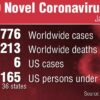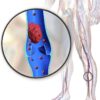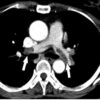![1]()
News
Cardiac arrest: Targeted temperature management a game changer
February 5, 2020
SNOWMASS, COLO. – “There are essentially no patients for whom temperature control somewhere in the range between 32 degrees C and 36 degrees C is contraindicated.”
![1]()
News
HHS declares coronavirus emergency, orders quarantine
January 31, 2020
The order “offers the greatest level of protection for the American public in preventing introduction and spread,” Dr. Cetron said.
![1]()
News
Wuhan virus: What clinicians need to know
January 26, 2020
“It’s not good enough to just download CDC’s guidance; use it to make your own local plan and know what to do 24/7.”
![1]()
News
Gunshot wound victims are at high risk for readmission
December 4, 2019
CHICAGO – Long-term outcomes of gun violence are still largely unknown.
![1]()
News
Storytelling tool can assist elderly in the ICU
November 12, 2019
SAN FRANCISCO – A graphic-based framework tool helps track best-and worst-case scenarios for elderly patients in the ICU.
![1]()
News
Smokers with PE have higher rate of hospital readmission
November 11, 2019
NEW ORLEANS – The rate of readmission within 30 days was significantly higher among PE patients with tobacco dependence.
![1]()
News
Previously healthy patients hospitalized for sepsis show increased mortality
November 5, 2019
WASHINGTON – U.S. patients hospitalized with community-acquired sepsis had higher mortality when they had no other comorbidities.
![1]()
News
Research on pediatric firearms deaths is underfunded
October 18, 2019
Much more money is spent to study the other leading causes of death in children and adolescents every year.
![1]()
News
Older IBD patients are most at risk of postdischarge VTE
September 10, 2019
Readmission for venous thromboembolism in patients with inflammatory bowel diseases most often occurs within 60 days of discharge.
![1]()
News
No reduction in PE risk with vena cava filters after severe injury
July 9, 2019
MELBOURNE – “Given the cost and risks associated with a vena cava filter, our data suggest that there is no urgency to insert the filter in patients who can be treated with prophylactic anticoagulation within 7 days after injury,” the investigators wrote.









